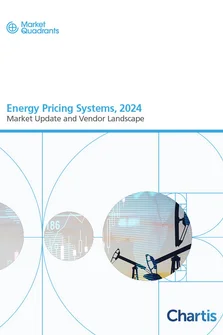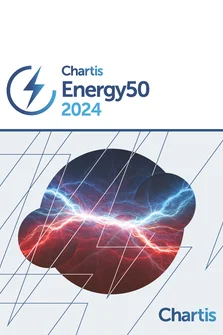The commodities markets are at an important crossroads in their evolution. The process of trading, procuring and selling commodities has always been risky and intricate, and it is only becoming more complex over time. The commodities markets are increasingly dominated by large integrated trading houses; the importance of the supply chain and logistics elements have increased significantly. Market structures have shifted, and so risk management solutions must change in response. Therefore, to address the needs of this emerging marketplace, Chartis has produced its first report on Commodity Trading Risk Management (CTRM).
The commodities and energy trading markets are increasingly decoupled, as regulatory drivers are forcing energy generation towards a model of management closer to that of financial services, while commodities are focusing more on details of logistics management. The “bridge” between these two remains energy commodities such as oil and gas.
Banks and other financial actors have retreated from the commodity trading space, driven by tightening budgets and increased regulation such as Dodd-Frank, Basel 3 and EMIR. Some have modified or reduced their presence, while others have left entirely. The void left behind has been filled by integrated trading houses, which have lighter regulatory burdens and an increased focus on loans, trade finance, and proprietary logistics infrastructures.
The dominance of the vertically integrated firms has changed the commodity risk marketplace. This emergence has brought with it a focus on supply chain characteristics and logistics elements from a risk perspective.
The role of risk management is therefore being altered to encompass raw materials processing and extraction, and is driving firms towards becoming hybrids of traders, producers and logistics players. Hedging throughout the supply chain is being addressed with products such as the “virtual steel mill.” Risk analytics must broaden their focus to accommodate these changes.
Logistics management should increasingly be performed within the context of the markets, taking into account volatility and variability of commodity prices. Flexible logistics environments should therefore be able to align material plans and costs with the modeling of market conditions and impacts. The integrated CTRM frameworks of the future may serve similar purposes to the trading and collateral management platforms for large sell-side firms, or ERP (Enterprise resource planning) services in process-oriented firms.
This report covers the technology requirements and the vendor landscape for commodity trading risk management systems. It aims to help buyers decide using Chartis’s RiskTech Quadrant® to help to throw light on the market. The RiskTech Quadrant® uses a comprehensive methodology of in-depth independent research and a clear scoring system to help explain which technology solutions meet the needs of various financial institutions. The RiskTech Quadrant® does not simply describe one technology solution as the best commodity trading risk management solution; it has a sophisticated ranking methodology to explain which solutions would be best for buyers, depending on their implementation strategies and business needs. However, due to the current immaturity of the CTRM marketplace, Chartis does not consider any vendors to provide a leading solution.
This report covers the vendors offering energy trading risk management solutions, including Agiboo, Allegro, Brady, OpenLink, SunGard, Tradepaq, TriplePoint (now a part of ION Investments) and Sapient.
Only users who have a paid subscription or are part of a corporate subscription are able to print or copy content.
To access these options, along with all other subscription benefits, please contact info@risk.net or view our subscription options here: http://subscriptions.risk.net/subscribe
You are currently unable to print this content. Please contact info@chartis-research.com to find out more.
You are currently unable to copy this content. Please contact info@chartis-research.com to find out more.
Copyright Infopro Digital Limited. All rights reserved.
You may share this content using our article tools. Printing this content is for the sole use of the Authorised User (named subscriber), as outlined in our terms and conditions - https://www.infopro-insight.com/terms-conditions/insight-subscriptions/
If you would like to purchase additional rights please email info@chartis-research.com
Copyright Infopro Digital Limited. All rights reserved.
You may share this content using our article tools. Copying this content is for the sole use of the Authorised User (named subscriber), as outlined in our terms and conditions - https://www.infopro-insight.com/terms-conditions/insight-subscriptions/
If you would like to purchase additional rights please email info@chartis-research.com

